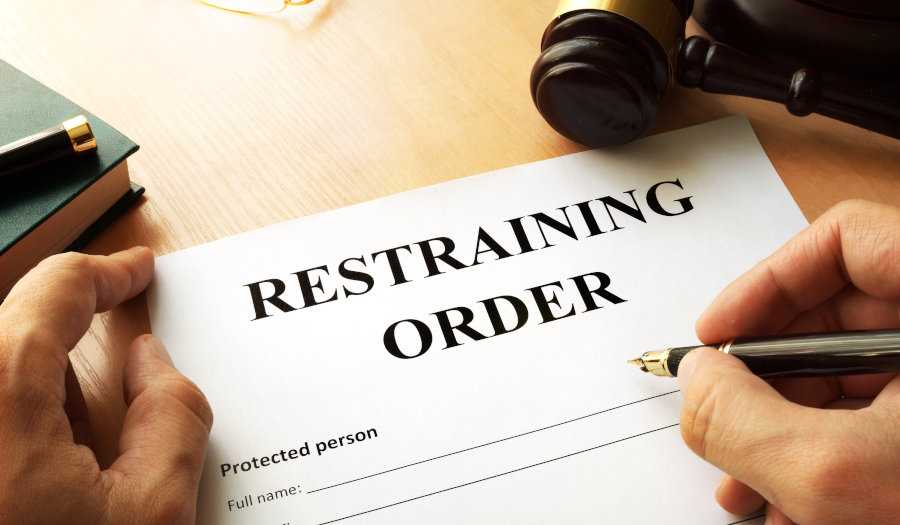
Types of Restraining Orders
Emergency Protective Order
If a police officer responds to a domestic violence call, the police officer can call a judge (anytime, day or night) and ask for an emergency protective order, which goes into effect immediately. Can last only five business days or seven calendar days (whichever is shorter). The emergency protective order can order you to leave your home, stay away from the complaining party, and prohibit you from seeing your children, at least on a temporary basis.
Temporary (ex parte) Restraining Order
If one alleges immediate danger and the need for protection right away, he/she can ask for a Temporary (ex parte) Restraining Order, which will last for up to 15 days, or until you have your full-court hearing, which is usually three weeks. The temporary restraining order can be acquired “ex parte”, which means it can acquired without the defendant’s presence.
Restraining Order After Hearing
After having a court hearing, a judge can grant a Restraining Order after Hearing that can last up to five years. One can then ask the court to have the order extended for another five years, or permanently. The court can make this extension if it believes that there is a “reasonable” fear that the defendant will threaten, harass, or abuse complaining party.
What are the Consequences of a Domestic Violence Restraining Order?
A Domestic Violence Restraining Order may:
- Order the defendant not to assault, threaten, abuse, follow, harass, or interfere with you, your children, or people you live with in person, at work, on the telephone, or by other means;
- Order the defendant to stay away from any place including the complaining party’s school, her children’s school, her work place, her friends’ homes, or any place where she may be seeking shelter;
- Prohibit the defendant from possessing or purchasing a firearm;
- Tell the police to remove the defendant from the home;
- Grant the complaining party temporary full control over things that you own together such as a car, a truck, a boat, a computer, tolls, electronic equipment, bank accounts, or household appliances;
- Order the defendant to continue to make the loan payments;
- Order the defendant to return the complaining party’s personal belongings;
- Order the defendant to pay certain bills, pay back money the complaining witness lost for missing work or other expenses (such as ambulance, medical, dental, shelter, counseling and/or legal fees);
- Order the defendant to pay complaining party’s attorney’s fees;
- Order the defendant to attend a batterer’s treatment program or other counseling service;
- Child custody and visitation – If the complaining witness and defendant have children together, the judge can decide where the children will live, which parent will make decisions affecting the children, and how the children will spend time with each parent (where, when, and whether supervised).
- Removal of child – You may ask the judge to keep either or both parents from traveling or moving outside the city, county, area, or state with the children.
Applicable California Law Sections
Code of Civil Procedure:
- Sec. 372 (Disability of Party)
- Sec. 527 (injunctions – not issued under Family Code)
- Sec. 527.6. Harassment; temporary restraining order and injunction; procedure; domestic violence; support person; costs and attorney fees; punishment
- Sec. 527.8. (Workplace violence; temporary restraining order; possession of firearm by person subject to order)
- Penal Code, Part 1, Title 9, Section 2:
- Sec. 273.6. Willful and knowing violation of court order to prevent domestic violence or disturbance of peace; penalty.
- FAMILY CODE – Division 10 Prevention of Domestic Violence
- PART 1. Short Title and Definitions, Secs. 6200-6219
- PART 2. General Provisions, Secs. 6220-6228
